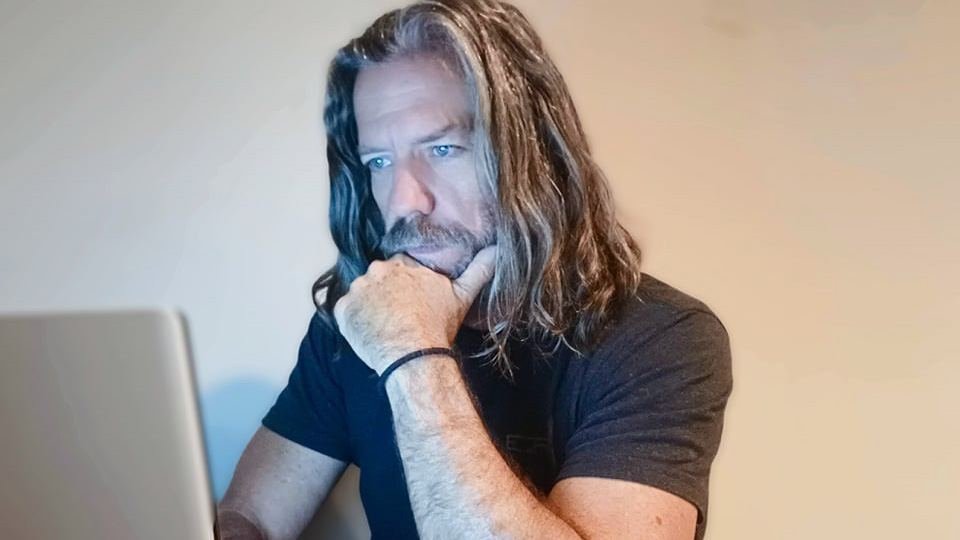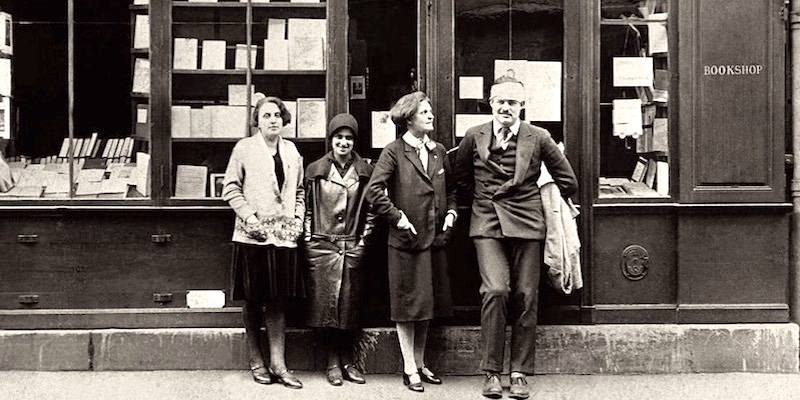
We’ve been living downtown for over a year. We’re loving this experiment, watching the scene develop. Like alien observers in a real-time urban study. But there’s still something missing downtown. ONE BIG THING. I’ve talked about it a lot, but here we go again.
Paris between the wars – particularly in the 1920s – is kind of the model for the “small-town-within-a-bigger-city downtown life.” That is to say that because of a very peculiar combination of circumstances: the devaluation of the French money (it was cheaper to live in Paris than just about any other major western city,) the resultant influx of American and British ex-pats, artists, and musicians; the existence of many cafes, restaurants, clubs, bars, and venues in a small geographical area; a lost generation’s need for artistic diversion from war, troubles, fears, and woes… all of these things came together, and because of that phenomenon, we have a pattern for the artistic development of an area and an epoch. Because of the particular way in which that scene developed, Paris has become one of the biggest tourist and visitor attractions in the world.
It’s a strange coincidence, but our little area, though a lot smaller, has a lot of the same attributes. It’s cheaper to live here than just about anywhere else. We’re getting a lot of financial refugees from other places. We have some great cafes, bars, and restaurants, and we’re getting more. We have some great live music on most weekends and special events. We all need some diversion from the crapshow that the world seems to be right now.
Constantly I hear people say, “How do we get more people coming downtown?” On a longer timeline, how do we make this place different? And how do we keep that going for generations?
Now for a test:
Name some of the famous luminaries who were part of the “scene” in Paris in the 1920s. Don’t try to “but I’ve studied this” to me here. I’m talking about names that MOST people would know. Play fair.
Politicians? 99.5% of you can’t name one.
City Officials? Same
Artists? Gertrude Stein collected artists like she collected art. Matisse, Chagall. I can think of more, but most people can’t. I think most people would probably only get Picasso.
Musicians? Listen, we can shout out names of artists who were world-travelers in the 20s and get quite a few right. Louis Armstrong, Django Rheinhardt. Some of you would get Josephine Baker, and you’d be right.
Writers? Most of you could name a half dozen or more. Hemingway, F. Scott Fitzgerald, Gertrude Stein, Ezra Pound, James Joyce, T.S. Elliot, and so many more.
Live music was king, and Jazz was big, but no one goes to Paris today to visit the jazz clubs because they aren’t there anymore. Bricktop’s is gone.
So, we’ve established something. Cities, downtowns, etc. become long-term generational destinations more for the writers and artists who were there than for the musicians or performers. I’m not saying we shouldn’t have all of it. We should. I love live music. I love plays. Cities and municipalities subsidize these things in one way or another. They encourage it. Money flows that way. They build venues. They seek events. They close streets and erect barricades for concerts and performances. They did it downtown here just last night and it was great. Sometimes they encourage murals and art festivals.
Writers are on their own.
A Sunday a year ago we walked down a breezy Center Street to the old Lyric Theater to watch a play in the afternoon. Comedy. It was very good. So much hard work on display. Local players all do it gratis, so it was fun seeing them line up outside on the street to be greeted and thanked by people leaving the theater. As I said, the performing arts are civically supported and there is a kind of instant gratification there for the performers to see their art appreciated. We can all use a departure from politics and anger and division of the “news,” TV, and movies. Living experimentally in a beautiful downtown undergoing revitalization can be exciting. Lots of music on most nights.
When we got near home that night a year ago we had to weave through the traffic stacked up on Baker Street which was closed with a bandstand set up in the middle of the street. From the apartment, we could hear the crowds raucously appreciating the music. Our nights are often syncopated to the thump-thump-thump of the drumbeat. We walked down hand-in-hand to The Turtle’s Enoteca bar, a small cocktail lounge down from the Lyric and far from the madding crowd on Baker. Danielle had a piece of cheesecake, and I had a scotch and we talked to friends for a pleasant hour, then we strolled back past the lighted 10 Mile Productions wine-tasting room where live music poured out the door opened to the night breeze.
Across Lee Street from the bakery is a place that teaches art classes. I haven’t been to the classes, but I see their posts on social media with proud and smiling students holding up their artwork. One night we were sitting outside the Tap House in their bistro seats and a friend walked by with her just-completed artwork. I jumped up and said, “let me see it.” She held it up, smiling. “I’d buy that right now,” I said.
The art of the brewer, the baker, the candlestick maker, the distiller, the musician, and the purveyors of the performing and visual arts, all of these are the most evident signs of a revitalized urban area. But they are not in any sense pillars of civilization.
The writer looks wistfully at all these things. Pleasant things they are, certainly.
Let’s review. We remember Paris for Picasso being there during the Lost Generation, and Matisse too. Musically, Cole Porter was there, and Josephine Baker. Django Reinhardt. Sidney Bichet – Jazz and a lot of it. There was plenty of music. Gertrude Stein collected art, but she collected writers too. Hemingway, Ezra Pound, and the others took up a fund to keep T.S. Eliot from having to work at a bank. That’s civic involvement. Imagine someone going around town raising money so that a writer didn’t have to work a day job and could produce the kind of art that would establish the town as a destination forever.
Sylvia Beach did more to support and advance Western Civilization than just about anyone, but it’s because she owned and operated a bookstore and she supported writers. The written art that came from Fitzgerald, Joyce, Hemingway, and the others changed literature and the English language forever and they are the main product of the time and the age and the place.
More people have read The Sun Also Rises than have ever appreciated Picasso.
It’s not a competition, but it is notable that we (humans) rush to support the “vital” (and by that I mean “performance”) arts as a supposed link to civilization and the higher angels of our nature (if there was such a thing,) but the writer toils alone. Matisse was probably never told “I just don’t look at art. I don’t have time.” Writers (at least sane ones who aren’t street performers) don’t set up on a street corner, pull out their laptops, and start typing while passersby drop dollar bills into the laptop case. Nobody calls us and says “Hey, can you set up in my bar Friday night and I’ll pay you $250 and drinks to write a short story.” Talent agents aren’t scouring honkytonks trying to discover new and talented writers.
But it is deeper than that. When times get tough, and they will, it’s the writers who go to prison or the gulags or to the wall. Solzhenitsyn wrote from exile, so did Tolstoy. Censorship is usually targeted at the written word, because written words topple dictatorships and destroy authoritarian regimes. We keep writers writing not just because we want our city to become a tourist destination, but because one day we’ll need them if we want to be free again. The term “book burning” has become a catch-all term for censorship, because it is ideas that tyrants want to burn. Writing is thinking.
Believe me, this isn’t complaining – it’s explaining. It’s just the representation of a reality. Robert E. Howard is from this area, but like most famous writers he is only adopted by a city after he is dead. Katherine Anne Porter was in Paris with Hemingway, too. She was born in Brown County and is buried here.
Today is Sunday downtown. Most places won’t be open, but a few will. I’ll walk around downtown and breathe it in. Then I’ll write some more.
We’re missing something as we plunge headlong into downtown revitalization. We should have concerts and venues and plays. We should have murals and art exhibits. But it still seems like something is missing. I’d like to see a literary “magazine” of some kind. Maybe quarterly. We could get advertisers to support it and then get businesses to give the things away like the do the tourism guides.
Nobody reads, they say.
They will.
***
Michael Bunker is a local columnist for BrownwoodNews.com whose columns appear periodically on the website.
